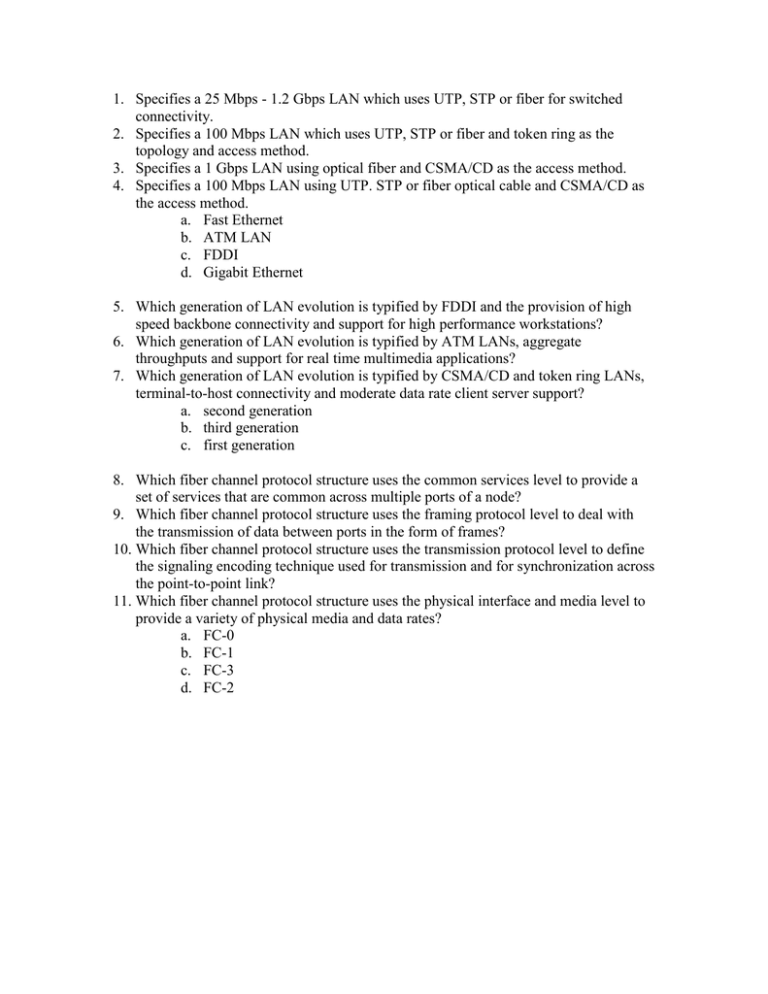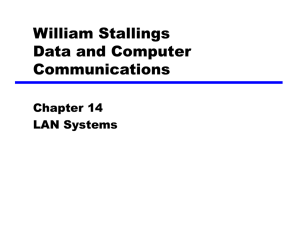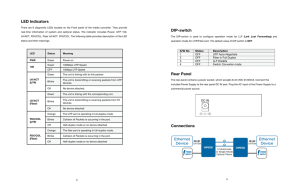1. Specifies a 25 Mbps - 1.2 Gbps LAN... connectivity. 2. Specifies a 100 Mbps LAN which uses UTP,...
advertisement

1. Specifies a 25 Mbps - 1.2 Gbps LAN which uses UTP, STP or fiber for switched connectivity. 2. Specifies a 100 Mbps LAN which uses UTP, STP or fiber and token ring as the topology and access method. 3. Specifies a 1 Gbps LAN using optical fiber and CSMA/CD as the access method. 4. Specifies a 100 Mbps LAN using UTP. STP or fiber optical cable and CSMA/CD as the access method. a. Fast Ethernet b. ATM LAN c. FDDI d. Gigabit Ethernet 5. Which generation of LAN evolution is typified by FDDI and the provision of high speed backbone connectivity and support for high performance workstations? 6. Which generation of LAN evolution is typified by ATM LANs, aggregate throughputs and support for real time multimedia applications? 7. Which generation of LAN evolution is typified by CSMA/CD and token ring LANs, terminal-to-host connectivity and moderate data rate client server support? a. second generation b. third generation c. first generation 8. Which fiber channel protocol structure uses the common services level to provide a set of services that are common across multiple ports of a node? 9. Which fiber channel protocol structure uses the framing protocol level to deal with the transmission of data between ports in the form of frames? 10. Which fiber channel protocol structure uses the transmission protocol level to define the signaling encoding technique used for transmission and for synchronization across the point-to-point link? 11. Which fiber channel protocol structure uses the physical interface and media level to provide a variety of physical media and data rates? a. FC-0 b. FC-1 c. FC-3 d. FC-2




